Paper proposal: Proton femtoscopy in Au+Au collisions at energies from BES program at RHIC
Title: Proton femtoscopy in Au+Au collisions at energies from BES program at RHIC
PA: Sebastian Siejka, Hanna Zbroszczyk, Paweł Szymański, Diana Pawłowska, Daniel Wielanek
Abstract:
The method of femtoscopy allows for determining the sizes of particle-emitting sources created in heavy-ion collisions at high energies. It uses two particle correlations sensitive to Quantum Statistics effects and Final State Interactions to determine the space-time properties of the source. Extracting radii of the sources from two-baryon correlations and comparing them with those obtained from meson-baryon or two-meson correlations provides complementary information about source characteristics. This analysis is based on data collected by STAR for Au+Au collisions at energies from the first phase of Beam Energy Scan program and studies femtoscopic correlations of identical and non-identical pairs of protons and antiprotons. A feeddown correction is applied to measured correlation functions to reduce the impact of data contamination by residual particles before extracting source radii and analysing their dependence on energy and centrality of collisions.
Paper draft:
PDF
Analysis note:
PDF
Analysis code:
/star/u/siejka/share/analysis_pack/
Presentations:
Paper proposal [Aug. 28th, 2022]
Paper proposal update [Sep. 13th, 2022]
Results (proposed figures):
Figure 12
Fraction of primary pairs in experimental data as a function of collision energy estimated based on data generated by vHLLE-UrQMD model.
Figure 15

Proton-proton (top), antiproton-antiproton (middle) and proton-antiproton (bottom) correlation functions after applying all corrections for three Au+Au collision centralities at $\sqrt{s_{NN}}=39$ GeV along with fits.
Figure 16
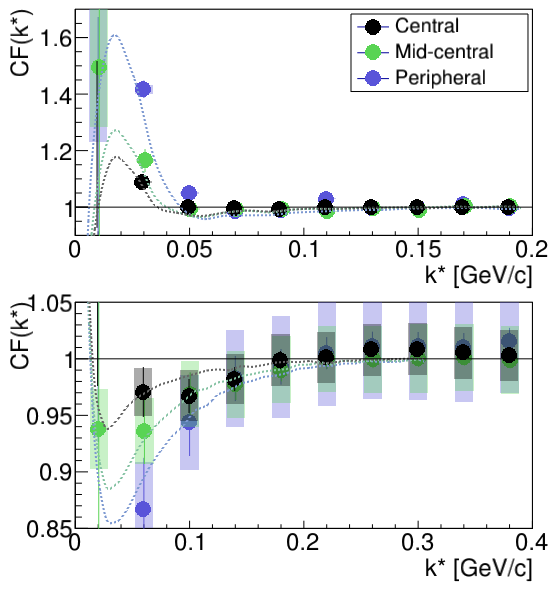
Proton-proton (top) and proton-antiproton (bottom) correlation functions after applying all corrections for three Au+Au collision centralities at $\sqrt{s_{NN}}=27$ GeV along with fits.
Figure 17
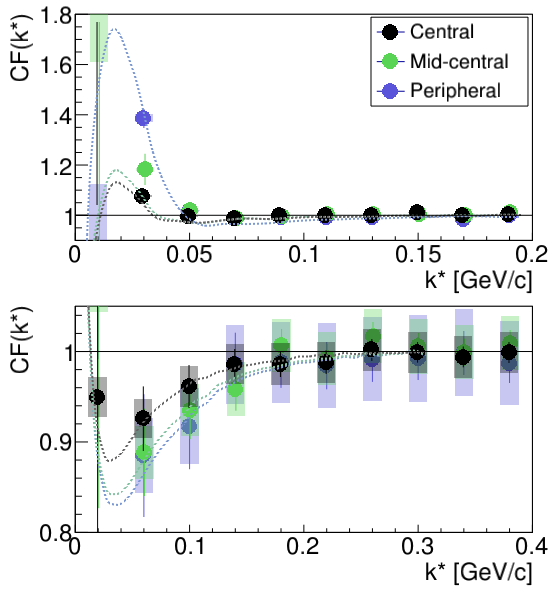
Proton-proton (top) and proton-antiproton (bottom) correlation functions after applying all corrections for three Au+Au collision centralities at $\sqrt{s_{NN}}=19.6$ GeV along with fits.
Figure 18
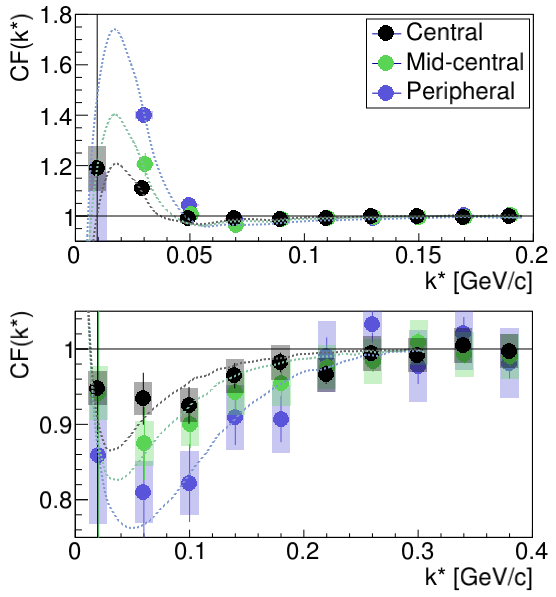
Proton-proton (top) and proton-antiproton (bottom) correlation functions after applying all corrections for three Au+Au collision centralities at $\sqrt{s_{NN}}=11.5$ GeV along with fits.
Figure 19
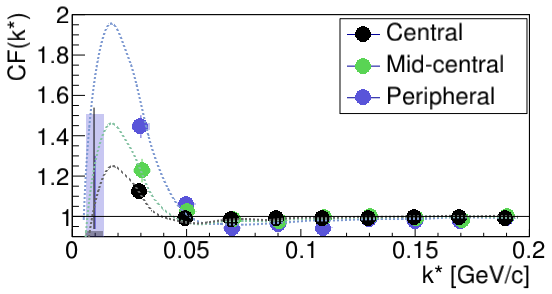
Proton-proton correlation functions after applying all corrections for three Au+Au collision centralities at $\sqrt{s_{NN}}=7.7$ GeV along with fits.
Figure 20
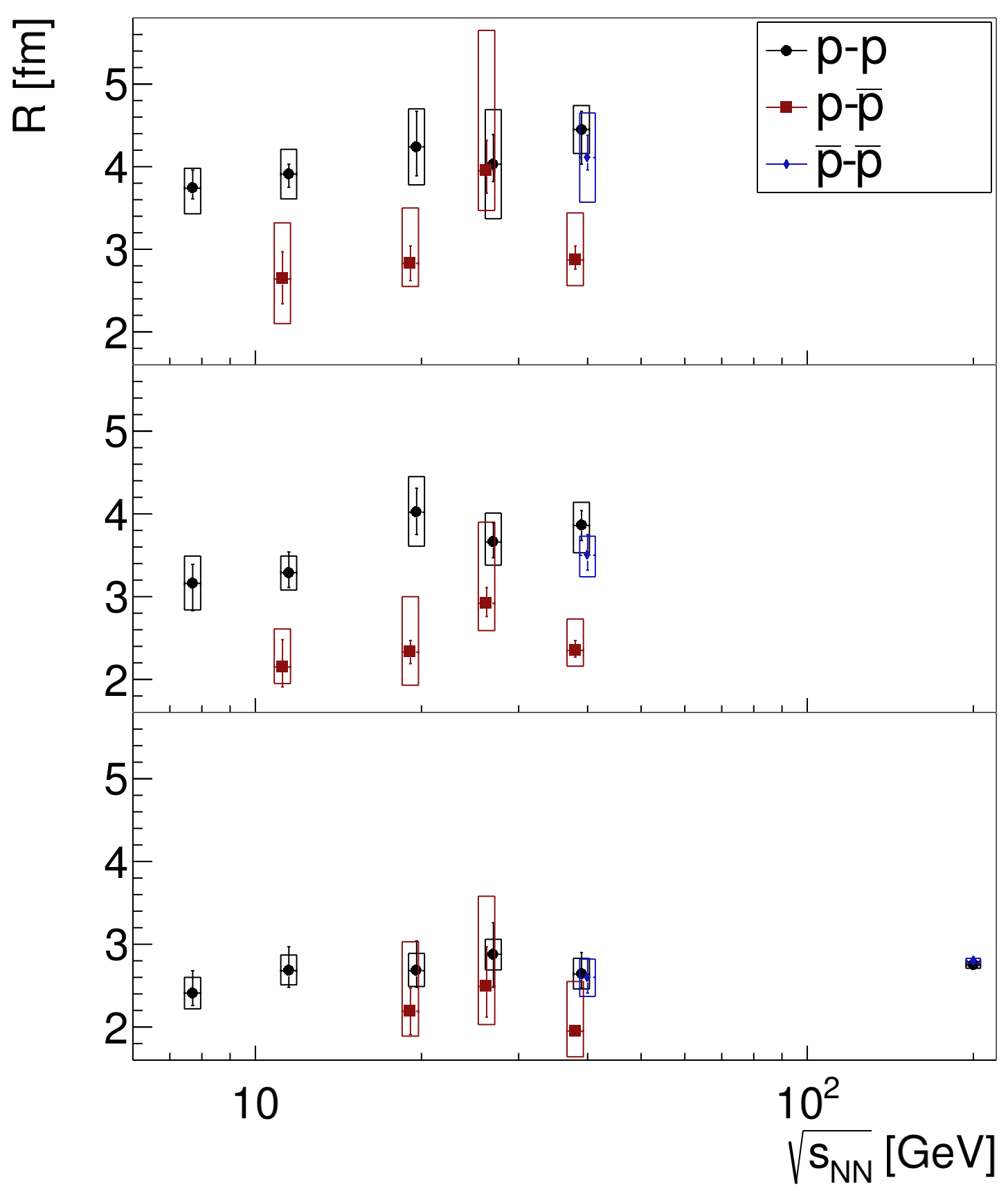
Extracted radii for various pair systems from correlation functions from central (top), mid-central (mid) and peripheral (bottom) collisions shown as a function of collision energy. Selected points have been gently shifted horizontally in order to improve readibility of the plot. Presented data includes points from $\sqrt{s_{NN}}=200$ GeV analysis.
Figure 21
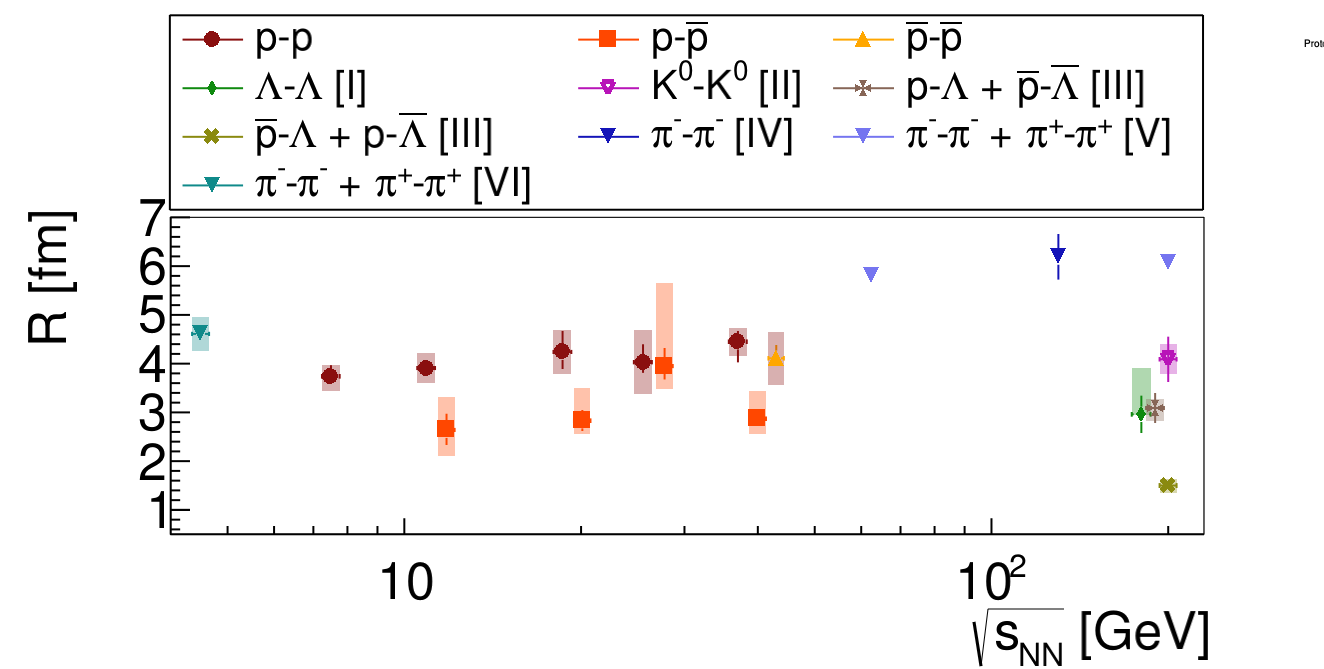
Comparison of extracted radii (circles: $p-p$, squares: $p-\bar{p}$, upward facing triangles: $\bar{p}-\bar{p}$; colour available online) with previous results for other energies and particle combinations (diamond: $\Lambda-\Lambda$; hollow downward facing triangle: $K^{0}-K^{0}$, four triangles +: $p-\Lambda/\bar{p}-\bar{\Lambda}$, X cross: $\bar{p}-\Lambda/p-\bar{\Lambda}$, downward facing triangles $\pi^{+}$ and $\pi^{-}$ combinations). Some points have been moved on the energy axis for better visibility of data.
Conclusions:
As expected, we observe no differences betweeen radii extracted from proton-proton and antiproton-antiproton systems, sincee their emission properties are identical. Despite corrections applied in order to account for contamination of experimental data with pairs containing protons and antiprotons originating from decays of other particles, we continue to observe discrepancies between radii obtained from correlation functions of identical and nonidentical baryons. This indicates either that the applied corrections did not mitigate the effect of residual particles, or that the observed protons and antiprotons are emitted from different areas of the particle-emitting source, which could be caused by annihilation processes. It could also be connected to the trend of growing fraction of primary proton-proton pairs at lower energies – further femtoscopic analysis of protons is warranted.
The biggest contribution to the large systematical uncertainties comes from the residual correction. This could be mitigated by conducting femtoscopic analyses of pairs of particles producing pairs with residual protons (such as $p-\Lambda$ or $\Lambda-\Lambda$) at BES-I and BES-II energies, as using such experimentally calculated correlation functions would lead to much lower uncertainties than estimations conducted in this analysis. Increased statistics should also have a positive impact on the analysis by allowing to apply more rigorous data selection criteria during particle identification and lessening the impact of purity correction.
Previous presentations:
Analysis update - residual correction [Jun. 2021]
Analysis update - fractions [Dec. 2020]
Quark Matter 2018
Analysis update [Apr. 2017]
- siejka's blog
- Login or register to post comments
